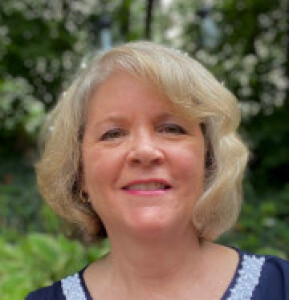Jean-Marie Galing's collections
Time
<p>The theme of TIME can be explored in art using key concepts throughout the semester or year. Explore various concepts related to the idea of TIME by playing the Connections Card Game. The mind maps made after playing the game can be used as a reference throughout the course. </p>
<p>Teacher Preparation:</p>
<ul><li>Download and print images on card stock (resource attached to this collection). Create multiple sets for small groups to play the game.</li><li>Print Key Concept Cards (resource attached to this collection)</li></ul><p>Student Activity:</p>
<ul><li>Take turns choosing a card and connecting it to a key concept by placing it near an appropriate Concept Card. </li><li>Defend choice with evidence in the image.</li><li>After all cards have been played, students make inferences about how people experience, measure or represent time. </li><li><span></span> Small groups collaborate to draw a mind map to illustrate their ideas. </li><li>Present maps in a "Carousel Interview." One group member stays with the mind map to answer questions; other group members visit tables to explore mind maps and ask questions.</li><li>Return to original group. Encapsulate overarching ideas and record them on your group's mind map.</li></ul>
 Jean-Marie Galing
Jean-Marie Galing
24
Abstract Sculpture
<p>For younger students, play an "I Spy" or sorting game with sculpture images. Attributes to look for:</p>
<ul><li>Geometric shapes/forms</li><li>Biomorphic shapes/forms</li><li>Inside/outside sculptures</li><li>Sculptures that resemble animals or people</li><li>Sculptures that don't resemble anything</li><li>Big/little sculptures - explain how you decided this (scale in relation to its surroundings)</li></ul><p>With older students, challenge them to construct a definition of abstraction based on what they observe in the sculptures. </p>
 Jean-Marie Galing
Jean-Marie Galing
23
Family Helper
<p>Images of children performing tasks that help their family. How are these children helping others? </p><p>What do you do to help out at home? Draw a picture of yourself being a helper.</p>
 Jean-Marie Galing
Jean-Marie Galing
6
Landscapes
<p>Choose several images to compare/contrast in terms of location, season, and/or style. Discuss why artists may choose to depict a particular place.</p><p>Formal analysis for elementary students: identify foreground, middle ground and background; describe how size and placement of objects and use of overlapping contribute to the illusion of depth. </p><p>Formal analysis for secondary students: describe color harmonies; identify focal point; find examples of one-point, two point, and atmospheric perspective. </p>
 Jean-Marie Galing
Jean-Marie Galing
29
Family Fun
<p> There are many ways that families have fun together. Have you done some of these activities with your family? Draw or paint a picture of you and your family enjoying an activity together.</p>
 Jean-Marie Galing
Jean-Marie Galing
13
Textiles embroidered with plants
<p>Examples of embroidery depicting plants. Supports primary grade stichery lesson.</p>
 Jean-Marie Galing
Jean-Marie Galing
7
Birds
<p>Compare similarities and differences among types of birds. </p><p>Analyze bird sculptures: what shapes/forms help represent the body, head, neck, beak, or wings? Which type of bird would you like to sculpt in clay?</p>
 Jean-Marie Galing
Jean-Marie Galing
16
Celebrate Good Times
<p>Images support second grade collage lesson. Choose an image that connects to a poem read to students (from <em>Celebrate American in Poetry in Art,</em> edited by Nora Panzer). Use questioning to describe and analyze the artwork: </p>
<ul><li>"What do you see?" </li><li>"What is happening here? </li><li>"What clues make you think that?"</li><li> "What else is happening in this image?" </li></ul>
<p>Celebration can take forms other than parades, dances, or parties. A portrait can celebrate the dignity of a worker <em>(Lunch at the Grill)</em> or someone who stood up for freedom (Harriet Tubman in <em>I Go to Prepare a Place for You</em>), or the birth of a new baby (<em>Family</em> by Romare Bearden).</p>
<p>Ask students to take a minute to think of a personal experience that this image reminds them of, then turn to a partner and share. This prepares them for the next step, which is to visualize a favorite community celebration and sketch in preparation for making a collage.</p>
 Jean-Marie Galing
Jean-Marie Galing
11
Animal Sculptures
<p>Images support second grade paper sculpture lesson. View a few images and lead a discussion with questioning:</p><ul><li>What do you notice about this picture?</li><li>Where do you think this is located?</li><li>If you were here and saw this animal, what would you be thinking?</li><li>Why do you think the artist chose to put this animal in this spot?</li><li>How do you think the animal affects people who use this space?</li><li>Can you think of a space in your community where an artist might place an animal sculpture?</li></ul>
 Jean-Marie Galing
Jean-Marie Galing
7


